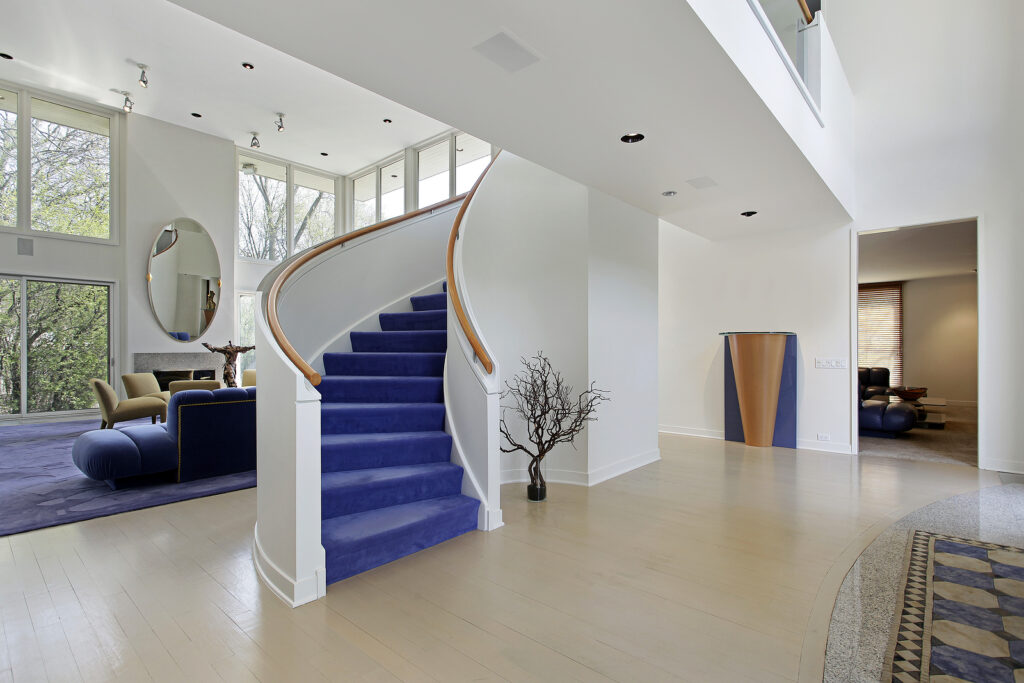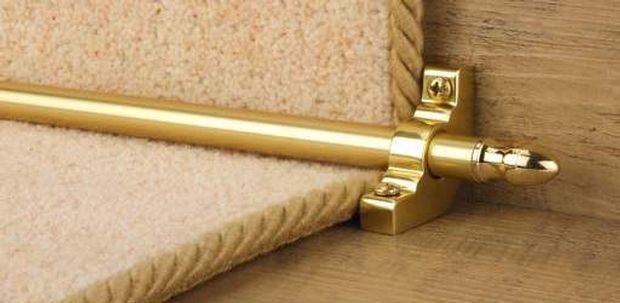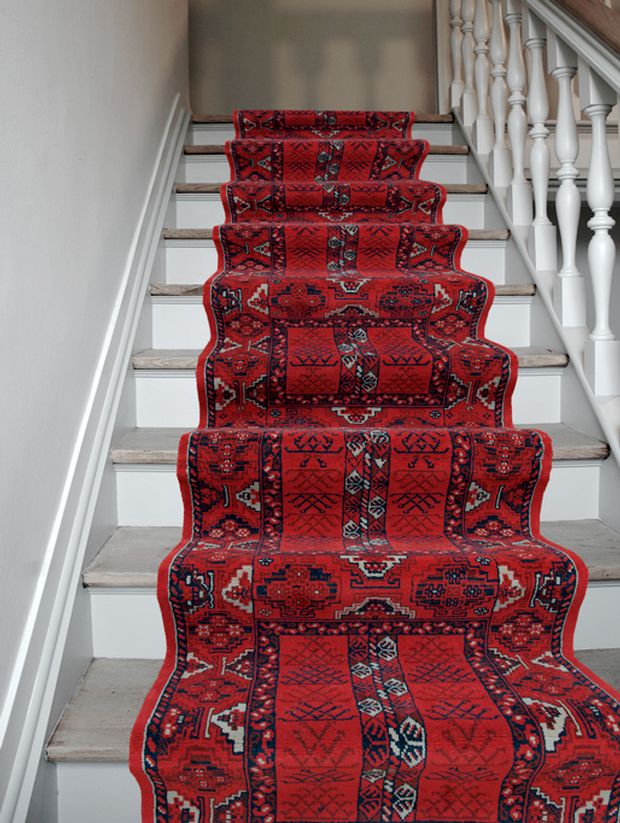What is the Best Paint for Stairs? The 6 Essential Do’s and Don’ts
Painting stairs is one of the best ways to transform your hallway and is a great task for novice DIYers. Most staircases are wooden, a material that’s great for painting, but what are the best paints for stairs? There are some important rules to consider when painting your stairs for the first time to ensure the finished product meets your expectations.
Choosing the best paint for your stairs is also extremely important if you’re purchasing a carpet runner and stair rods or bars to ensure you’re able to maximise your staircase appearance. There’s nothing worse than having beautiful runners and bars installed on stairs that have been poorly painted or painted using cheap paint.
Take a look below at what the best paint for staircases is and how to apply it to transform your staircase into the focal point of your hallway.
What’s the Best Paint for Stairs?

Technically, there’s no “one best paint” for stairs, because painting stairs involves a few steps to secure the best finish. The best paint for stairs would also need to take into account the material the stairs are made from. For example, wooden stairs would require a good primer coat, a base layer, and a top layer of oil-based paint.
Most people opt for satin or semi-gloss finishes when it comes to the best paint for stairs, as both are durable and look good on hardwood floors. These paint types are also typically used as floor paints.
Whether you choose to varnish, gloss, matt, or something different is entirely up to you, just so long as the paint can stand up to the floor traffic. Below, we’ve labelled some key dos and don’t when it comes to buying the best paint for stairs and how to apply it.
Do: Prep your staircase for painting
Prepping your wooden stairs is essential to achieve your desired finish. The same thing goes with your bannisters and handrails (if you’re painting them). First things first, if your staircase has seen better days (the wood is old, poor paint job previously or there are severe signs of wear and tear), you will need to lightly sand your staircase. This can be done using 60 grit sandpaper on the bannisters, handrails, risers, and stair treads of the wooden stairs.
Once sanded, hoover any noticeable debris and then wash away the dust and debris using a wet towel. Once dry, use sugar soap to clean the stairs, the sugar soap will also act as a layer for the paint to bind to.
Do: Choose the right paint
As stated above, you can pretty much choose any paint when it comes to wooden stairs, but there are certain paints that are designed for floors that see higher levels of foot traffic and are therefore required to be more durable. Semi-gloss or satin paints are typically preferred for risers but can prove dangerous when used on the stair treads. Always opt for floor paints when you can, as they’re designed to be non-slip and more durable than other kinds of paints.
Do: Experiment with Bold Colours

It’s always recommended that you experiment with some tester paints before you decide on one (or two) colours for your wooden stairs. There are plenty of home stores that sell tester pots, so buy some and try them out on your stairs, as they may look different once applied.
Wooden stairs look great with one or two colours, so experiment with both. You may want to go with a two-tone white/blue or a white/beige combination for the stair treads and risers for a cool, neutral finish. Alternatively, block white or wood colours look great when combined with accent stair runners and rods.
Don’t: Use cheap paints
Paints can be expensive but there’s a reason for this. If you buy any old tin of paint or paint that’s the cheapest off the shelf, it’s likely it won’t last as long and will start to peel after a few months of foot traffic. It’s essential you buy the best paint for stairs, which is typically floor paint – satins and semi-gloss are usually preferred, but read the manufacturer’s guidelines to see where the paint can be applied.
Don’t: Assume all paints are the same and will look the same when applied
There are many different variations of paint, many of which are created to be used on certain surfaces. For example, you would never use outdoor masonry paint on a wooden staircase or anywhere indoors because it’s designed to be used outdoors. Research which paints work best with wooden stairs, bannisters and handrails before buying the first tin you see.
It’s equally important to buy testers (as mentioned above) to ensure the paint looks just as good in the pot as it does on your wooden stairs. It will take a few coats for the paint to truly shine, so be sure to apply three or four tester patches before settling on the best paint for your stairs.
Don’t: Paint paint-on stair runners

This one is slightly controversial, but hear us out. While there are some fine examples of painted stair runners on wooden stairs, they only really work on the very specific hallway and staircase designs. If your hallway at home is going for a rustic, wooden or traditional look, then you can get away with painting a stair runner onto your stairs, so long as it’s dark wood colour. This way it’s able to hide the inevitable scuff marks and dirt.
However, we’d always recommend opting for a stair runner and bars if your home isn’t going for this look. There are so many fantastic variations to choose from when it comes to stair runners and bars. For example, you could combine your white-painted staircase with a midnight blue runner, or a traditional Persian runner if you have an oak-coloured or wooden staircase.
Now You Know How to Select the Best Paint for Stairs, Complete the Design!
We truly believe that no staircase is complete without the final addition of a classic stair runner and matching door bars and rods. Take a look at our stunning collection of beautifully crafted runners and bars to combine your wonderfully painted staircase with an extra dash of comfort and colour.
Explore our carpet runners and door rods and brackets.


